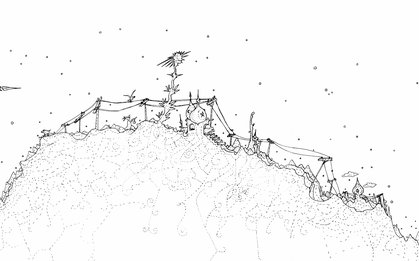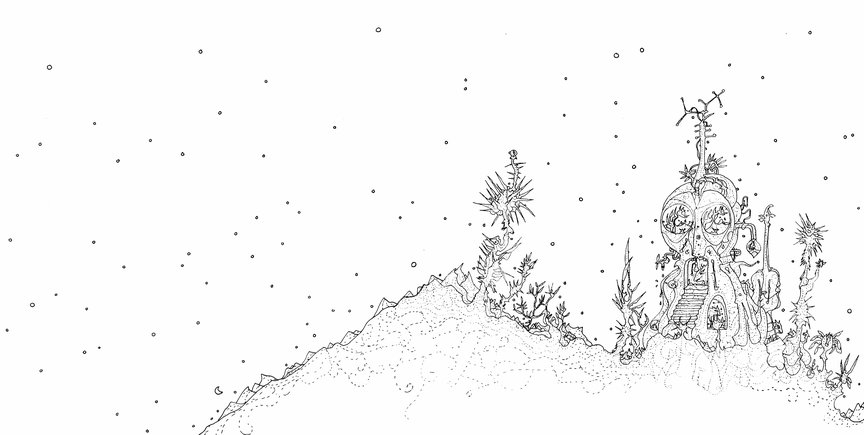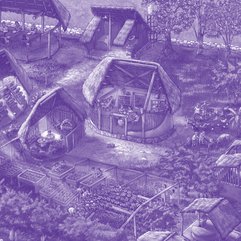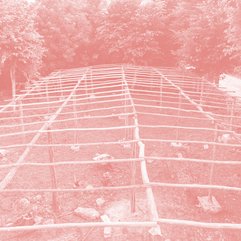House of Similarities
This text is also available in Spanish:
Creating a home for bees can be very different from setting up a honey factory.
It would be unfair to say that all of the artificial beehives around the world are places of exploitation and domination. In many of them, particularly the small-scale ones, beekeepers love the bees, treat them with affection, and look at them with reverence because they are endearing beings whose existence leads us naturally to sweetness. However, apiaries are often places of abuse. Many of them reach industrial—sometimes exorbitant—dimensions, and focus from their inception on exploitation, multiplication, and efficiency that characterizes any serial production process. There is no need to mention here where these voracious practices and engineering for domination have taken us.
A few months ago, I visited the town of Maní in the Yucatán Peninsula. I went with the intention of getting to know the community that lives there, the Melipona bees, and the people who, by vocation, work hard to breed them. Given the delicate nature of this genus of bees and the particular sensitivity of the local inhabitants, I knew that I would encounter a gentle and fair approach to beekeeping. But what I observed in the meliponaries was much more than just an equitable partnership; I witnessed an endearing ancestral practice of interspecies mutuality. I was also touched by the unified organization and unlikely intelligence of a swarm.
We built a house for Melipona bees: a structure that is both a reflection and a product of the observation, learning, and uninhibited understanding of these winged nymphs that, in their loving strategy, have no need for a stinger. It is a house of tribute and gratitude. Rather than a grand aspiration, it is a gesture and a meeting point. An attempt, which may succeed or fail, to reward and honor the queen and her multifaceted descendants. The small building will be given to the bees and their flowers, to the landscape, and to the community that provides them with dwellings and helps them display a surprising range of virtues, benefits, and reciprocities. This exercise offers us the opportunity to become short-term allies of the bees—even if only at the symbolic level—and become their students, learning from their collective practice, integral forms of organization, complicity, and impeccable upbringing. It is a gift for the bees that is given without asking for anything in return, other than their erudition and trust.
In addition to being a house, this small structure is also a statement composed of a single word: Sphere. Or star, imprint, maternal womb, smooth body free of edges, universe of infinite continuity whose interior allows for freedom in the design of the royal chamber and of that world of vaults, passageways, laboratories, and cradles built by the Melipona architects. It is a temple with a single entrance guarded by the stoic vigilant who has always passed his baton to every Melipona house that has ever existed. They will inhabit it in their time, there in Maní, and in their ways of doing so we will find—I would like to believe—a stream of utterances, lessons, and answers.
Inhabitants shape their surroundings, transforming them into their own world. The similarities, in dynamic play with differences, are the paradoxical starting points of a possible form of interspecies communication. A dwelling is a universal referent: it is recognized, respected, or transgressed—inhabited and defended—and each house portrays the particular universe of each realm.
Ariel Guzik, 12.09.2022
Translated by Juan Diego Otero and Joseph Keady for Gegensatz Translation Collective

 Ariel Guzik, Illustrations from House of Similarities, 2022
Ariel Guzik, Illustrations from House of Similarities, 2022

 Ariel Guzik, Illustrations from House of Similarities, 2022
Ariel Guzik, Illustrations from House of Similarities, 2022








